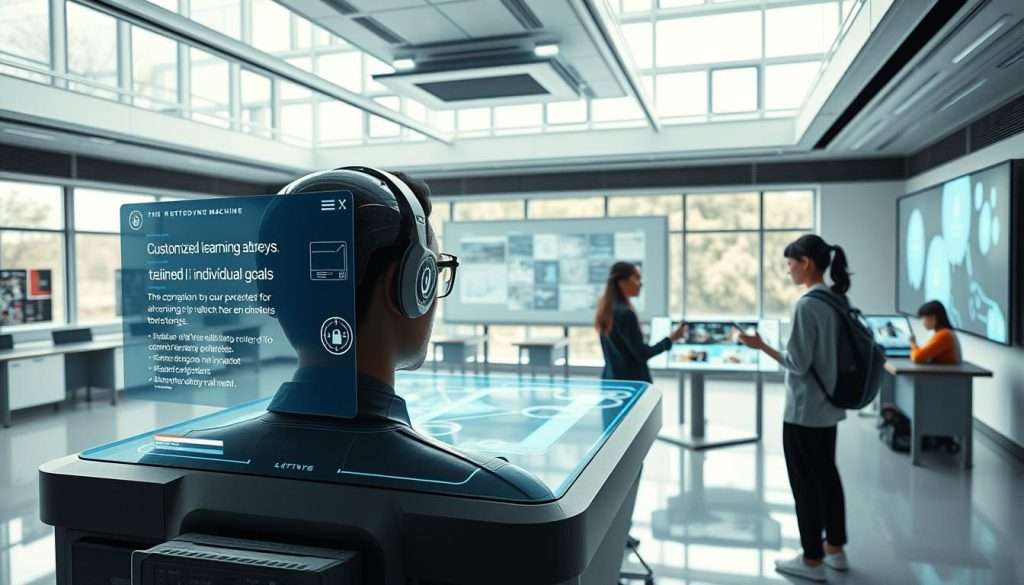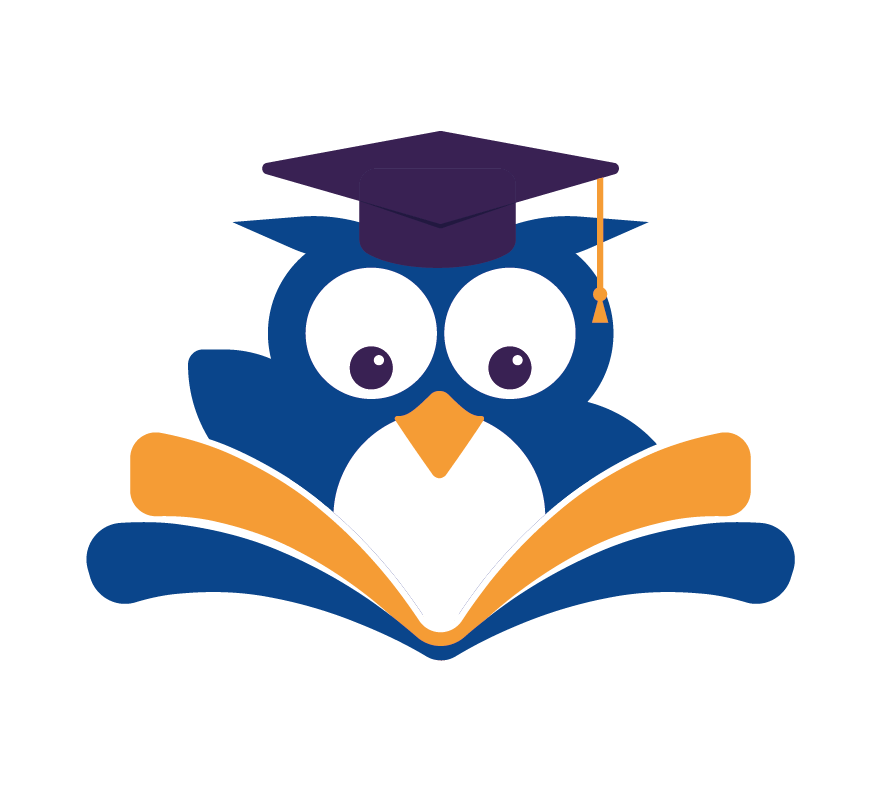Are you tired of the same old learning routine? Transformative learning is about creating experiences that challenge your existing mental models. It leads to personal growth and change. It’s time to break free from traditional learning methods that often fall short.
We believe that learning should be an enjoyable and effective experience. By adopting a transformative approach, you can discover new ways to absorb and retain information. This makes learning a rewarding journey.
Join us as we explore how to revolutionize your learning and unlock your full potential.
Key Takeaways
- Transformative learning challenges existing mental models for personal growth.
- Traditional learning methods often fail to engage and retain learners.
- Adopting a transformative approach can make learning more enjoyable and effective.
- New experiences and methods can enhance information absorption and retention.
- Revolutionizing learning unlocks full potential and leads to a more fulfilling educational journey.
The Science Behind Effective Learning
Learning isn’t just about taking in information. It’s about changing how we think. To improve our learning, we must understand our brains.
How Your Brain Processes New Information
Our brains are complex and process information in many ways. When we get new data, it goes through filters before becoming memory. Knowing this can help us learn better.
The hippocampus is key in moving information from short-term to long-term memory. Studies show that being actively involved with the material boosts retention.
The Connection Between Emotion and Memory
Emotions greatly affect how we remember things. When we feel strong emotions, our brains release dopamine. This helps solidify memories, making emotional experiences stick with us longer.
| Learning Method | Retention Rate |
|---|---|
| Passive Reading | 10% |
| Active Engagement | 80% |
Why Traditional Learning Methods Often Fall Short
Old learning methods mainly focus on passing on knowledge. This can lead to a shallow grasp and poor memory. Using more interactive and emotionally engaging ways can improve our learning and help us understand more deeply.
Assess Your Current Learning Style
Let’s explore how to assess your learning style to reach your full potential. Knowing how you learn best is key. It helps you use innovative learning approaches and cutting-edge learning methods.
Identifying Your Learning Preferences: Visual, Auditory, Kinesthetic
Everyone learns differently. Some like pictures and diagrams, others sound and music, and some hands-on activities. Finding out how you learn is the first step to better learning.
Common Learning Obstacles and How to Recognize Them
Many people face distractions, lack of motivation, and poor time management. Spotting these issues is the first step to solving them. We can guide you in finding these problems and offer ways to overcome them.
5 Self-Assessment Tools to Discover Your Learning Profile
Here are 5 tools to find out your learning style:
- VARK questionnaire
- Kolb’s Learning Style Inventory
- Felder-Soloman Index of Learning Styles
- Multiple Intelligences test
- Edwards Personal Preference Schedule
| Tool | Description | Focus Area |
|---|---|---|
| VARK questionnaire | Identifies learning preferences | Visual, Auditory, Read/Write, Kinesthetic |
| Kolb’s Learning Style Inventory | Assesses experiential learning | Concrete Experience, Reflective Observation, Abstract Conceptualization, Active Experimentation |
| Felder-Soloman Index of Learning Styles | Evaluates learning preferences in depth | Sensing/Intuition, Visual/Verbal, Active/Reflective, Sequential/Global |
By using these tools and understanding your learning style, you can adopt a more innovative learning approach. This way, you’ll make the most of cutting-edge learning methods.
Revolutionize Your Learning Through Mindset Shifts
A mindset shift can greatly improve how you learn and remember new things. It changes your mental models by adding new experiences. It’s about making choices that help you grow and change.
Embracing Growth Mindset vs. Fixed Mindset
Having a growth mindset is key for learning well. It’s different from a fixed mindset, which sees abilities as unchangeable. A growth mindset believes you can grow your intelligence and talents.
This change in thinking can really improve your learning strategies.
With a growth mindset, you become more ready to face challenges. You see failures as chances to learn, not as threats to your ego.
Overcoming Learning Anxiety and Impostor Syndrome
Many learners face learning anxiety and impostor syndrome. These feelings can really slow down your learning. The first step is to see them as normal and conquerable.
Using mindfulness and positive self-talk can help. They let you stay focused on your learning goals.
Developing Learning Resilience: Bouncing Back from Setbacks
Learning resilience is more than just bouncing back. It’s about growing from those experiences. Building this resilience means seeing challenges as part of learning.
Daily Practices to Strengthen Your Learning Mindset
To make your learning mindset stronger, try these daily habits:
- Think about your learning, figuring out what worked and what didn’t.
- Set achievable goals and celebrate your wins, no matter how small.
- Use mindfulness to stay focused and present during your learning.
Adding these habits to your daily life will help you improve your learning strategies and use advanced learning techniques.
Cutting-Edge Learning Technologies and Tools
Imagine boosting your learning with AI, VR, and more. Welcome to the future of education. We’re on the edge of a learning transformation. It’s driven by next-generation learning solutions that make learning fun, engaging, and effective.
AI-Powered Learning Assistants and How to Use Them
AI-powered learning assistants are changing how we learn. They offer personalized guidance and support. These smart tools can:
- Spot knowledge gaps and suggest study materials
- Make learning plans just for you
- Keep track of your progress and adjust your learning
Mastering Spaced Repetition Systems and Apps
Spaced repetition is a key learning method. It reviews material at longer intervals to help you remember better. Apps like Anki and Quizlet make it simple to use spaced repetition in your studies.
| App | Features | Platform |
|---|---|---|
| Anki | Flashcard system with spaced repetition | Web, iOS, Android |
| Quizlet | Study games, flashcards, and tests | Web, iOS, Android |
Virtual and Augmented Reality Learning Experiences
VR/AR are changing learning by offering immersive experiences. They let you explore real-world environments. From historical sites to complex surgeries, VR/AR makes learning fun and accessible.
Case Studies: Transformative Results from Tech-Enhanced Learning
Here are some examples of how these technologies are changing education:
- A medical school uses VR for surgeries, boosting student skills.
- An AI language app creates personalized lessons, helping learners progress faster.
These next-generation learning solutions are more than just tools. They’re transforming education. By using these technologies, you can elevate your learning and experience a real learning transformation.
The Power of Active Learning Strategies
Changing your study habits from passive to active can greatly improve your learning. Active learning means you actively engage with what you’re studying, not just passively reading or listening. This method helps you remember and understand information better.
Converting Passive Study into Active Engagement
To make your study active, try summarizing what you’ve read in your own words. Or, create concept maps to see how ideas connect. Discussing or debating the material with others also deepens your understanding and helps you remember it better.
Effective Note-Taking Techniques: Cornell, Mind Mapping, and Sketchnotes
Good note-taking is key to active learning. Methods like the Cornell method, mind mapping, and sketchnoting help you organize and review your notes well. For instance, the Cornell method splits your paper into two columns for notes and summaries, making quick review easier.
| Note-Taking Technique | Description | Benefits |
|---|---|---|
| Cornell Method | Divides paper into two columns for notes and summaries | Easy review, organized notes |
| Mind Mapping | Visual map of ideas and concepts | Visual learning, connections between ideas |
| Sketchnoting | Combines drawing and note-taking | Engages visual and creative thinking |
Teaching Others as the Ultimate Learning Strategy
Teaching what you’ve learned to others is a top way to solidify your own knowledge. Explaining concepts to someone else helps you understand them better and spot areas for more practice. Try teaching a friend or family member what you’ve learned to boost your own understanding.
Active Recall: Implementation Guide
Active recall means actively recalling information from memory, not just re-reading it. To use active recall, try flashcards or practice quizzes on what you’re studying. You can also test yourself by recalling key concepts without looking at your notes or other resources.
Optimize Your Learning Environment for Maximum Results
Creating a good learning environment is key to success. The saying “You are your environment” shows how important it is. A good space can really help your learning.
“Leaders don’t develop by passively absorbing information. They develop by making decisions, facing uncertainty, and engaging in difficult conversations,” says a wise leader. This shows how important it is to have a space that helps you grow and face challenges.

Designing Your Physical Space for Focus and Retention
Your study area should be free from distractions. Use a dedicated desk or area without clutter. Good lighting and comfy seating help you study longer.
Digital Environment Organization: Apps and Systems
Today, organizing your digital space is as important as your physical one. Use apps and systems for notes and tasks. This keeps your info organized and helps you stay on track.
Managing Distractions and Implementing Focus Triggers
It’s vital to manage distractions to stay focused. Identify what distracts you, like social media, and find ways to avoid it. Use tools like the Pomodoro Technique to stay productive.
By improving your learning environment, you can learn better. Remember, cutting-edge learning methods are not just about techniques. They’re also about creating a supportive environment for your goals.
Social Learning: Leveraging Community for Accelerated Growth
Joining a community can change your learning journey. Surrounding yourself with like-minded people opens you to new ideas and motivation. We think social learning is a great way to improve your learning.
Finding and Building Supportive Learning Communities
To use social learning, find or create a supportive group. This could be an online forum, social media group, or local meetup. Look for groups that match your learning goals. Don’t hesitate to say hello and join in. You can also start your own group by inviting others to learn with you.
Collaborative Learning Techniques That Enhance Understanding
Working together can really help you understand better. Techniques like peer-to-peer teaching and group projects are great. They let you share knowledge, discuss tough topics, and learn from each other’s experiences.
The Art of Giving and Receiving Effective Feedback
Feedback is key in social learning. When giving feedback, be specific, timely, and constructive. When you get feedback, be open-minded and receptive. This helps everyone grow and improve together.
Create Personalized Learning Pathways for Your Goals
Transformative learning starts with a personalized pathway. It challenges your current thinking. Design a learning journey that fits your unique goals and dreams.
Designing Custom Curriculum Based on Your Specific Objectives
Begin by identifying your main goals. What do you aim to achieve? What skills do you need? Prioritize your goals and break them into smaller parts. This keeps you focused and ensures your learning meets your needs.
Balancing Breadth and Depth: The T-Shaped Learning Approach
The T-shaped learning approach balances depth and breadth. It means gaining deep knowledge in one area (the vertical bar) and broad skills in others (the horizontal bar). This makes you a well-rounded expert with both specialized and general knowledge.
Adapting Learning Strategies as You Progress and Evolve
As you learn, adjust your strategies to fit your changing needs and goals. Regularly check your progress and be ready to change course if needed. This might mean changing your learning schedule, finding new resources, or taking on new challenges.
Tracking Progress: Metrics That Actually Matter
To track your progress, focus on important metrics. Look at the skills you’ve gained, the complexity of projects you’ve done, or the time you’ve spent practicing.  Use these metrics to improve your learning pathway and make informed decisions about your next steps.
Use these metrics to improve your learning pathway and make informed decisions about your next steps.
By creating a personalized learning pathway and adjusting your strategies, you’ll be on your way to achieving your goals. You’ll have a transformative learning journey.
Conclusion: Your Learning Revolution Starts Now
We’ve looked into how we learn best, figured out your learning style, and talked about new tech and strategies. Now, it’s time to use what we’ve learned to improve your learning.
The best learning comes when you connect new ideas to real-life challenges. By using the strategies we’ve discussed, you can beat obstacles, reach your goals, and make learning fun and effective.
To start your learning revolution, make small changes every day. Try new learning methods like active recall or spaced repetition. See how they work for you. As you go, you can adjust and improve your learning even more.
Your learning revolution is just starting. Take the first step today. Get ready to change how you learn and grow. This will not only make learning better but also open up new chances and help you reach your goals.

